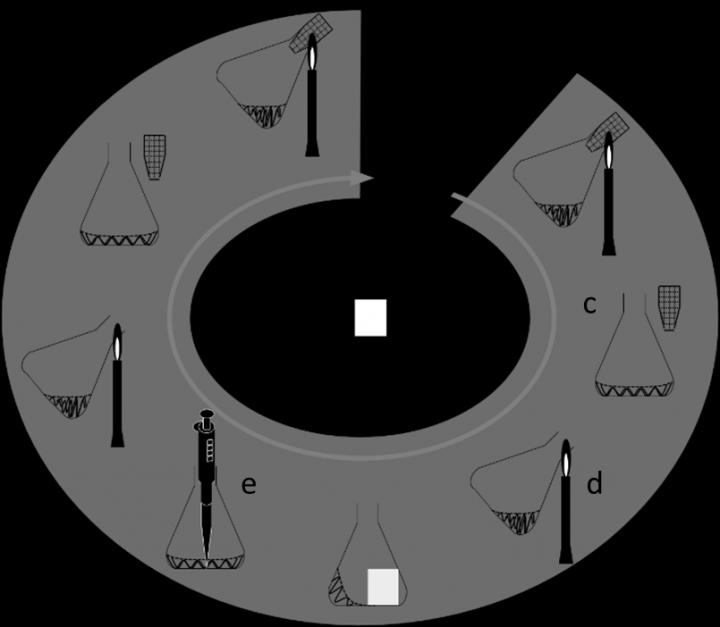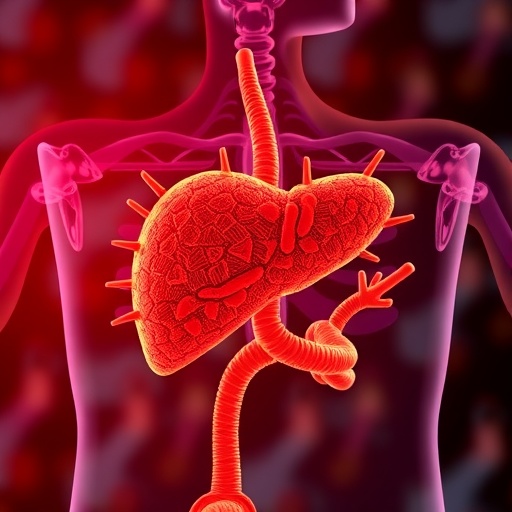Researchers from the University of Tsukuba find that a common practice for keeping microbial contaminants out of shake-flask cultures can considerably affect cell growth

Credit: University of Tsukuba
Tsukuba, Japan – Researchers commonly culture bacteria for many purposes, such as to screen pharmaceuticals and manufacture vaccines. In these cases, shake flasks have been commonly and generally used for over 90 years to cultivate microbes.
To keep track of what’s going on in the shake flask, researchers must use stringent sterilization techniques while extracting a sample of cells. A common sterilization technique is to expose the plug and flask to a flame at several time points during cell extraction. However, if this sterilization affects the cell culture in any way, you may inadvertently hinder production of the vaccine or whatever substance you want from the culture.
In a study recently published in Scientific Reports, researchers from the University of Tsukuba have shown that flame sterilization introduces carbon dioxide into shake flasks. This excess carbon dioxide can considerably affect cell growth.
Carbon dioxide is a product of methane combustion in the flame. The researchers found that flaming the flask for even a few extra seconds, or tilting the flask a few extra degrees, considerably increased the carbon dioxide concentration in the flask.
“For example, at a flame exposure time of only 5 s, increasing the inclination angle from 15° to 25° increased the carbon dioxide concentration in the headspace by approximately 50%,” says Professor Hideki Aoyagi, senior author of the study. “Computational modeling confirmed our findings.”
These increases in carbon dioxide concentration are induced over the course of only a few seconds of flame sterilization. But do they substantially affect cell growth? To test this hypothesis, the researchers needed to add excess carbon dioxide while keeping the flasks shaking, because interrupting the shaking can itself affect cell growth.
“We introduced intermittent carbon dioxide at concentrations similar to those expected by flame sterilization,” explains Professor Aoyagi. “The ultimate oxygen demand of Acetobacter pasteurianus–known to spoil wine– increased by up to 70%. Pelomonas saccharophila increased by up to 35%, whereas the other two microbes were not clearly affected in terms of growth.”
The researchers do not yet know how common it is for flaming a shake-flask to alter cell culture growth. Nevertheless, seemingly minor experimental sterilization variables–too subtle for most researchers to even notice at first glance–may actually be pertinent. Culturing microbes in shake flasks and producing valuable products in the culture–perhaps relevant to COVID-19 research–may be substantially more complicated than previously appreciated.
###
Media Contact
Naoko Yamashina
[email protected]
Related Journal Article
http://dx.




